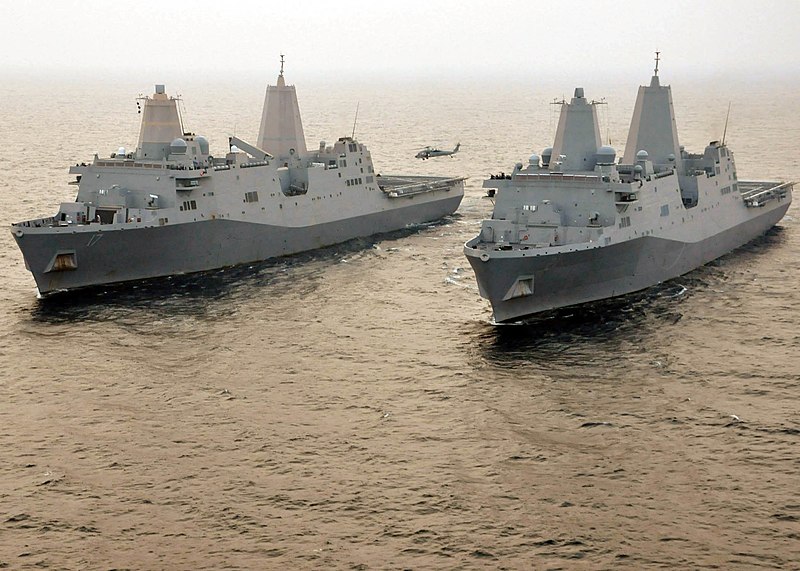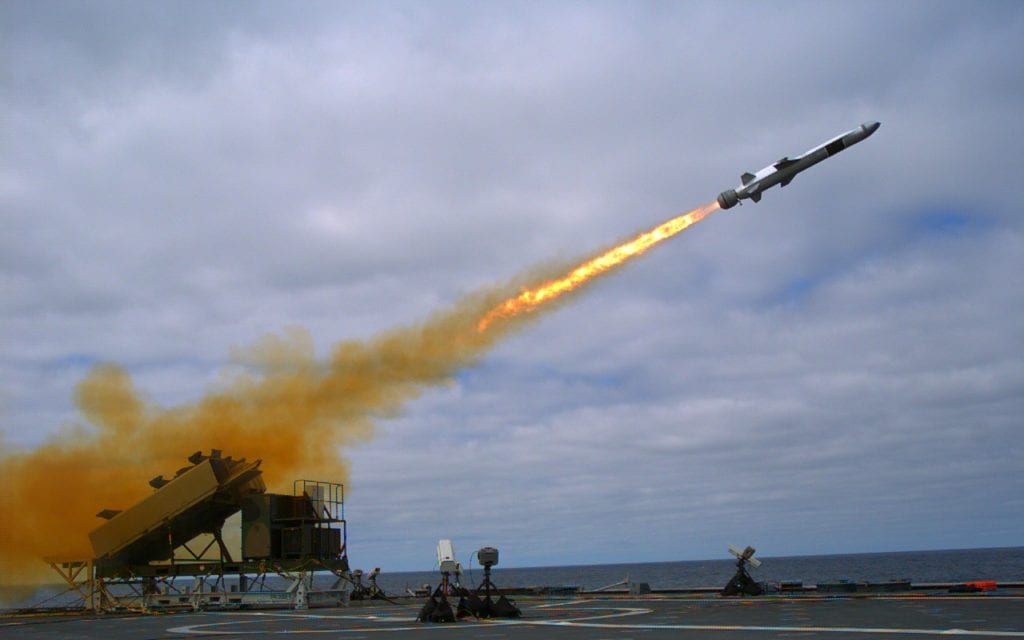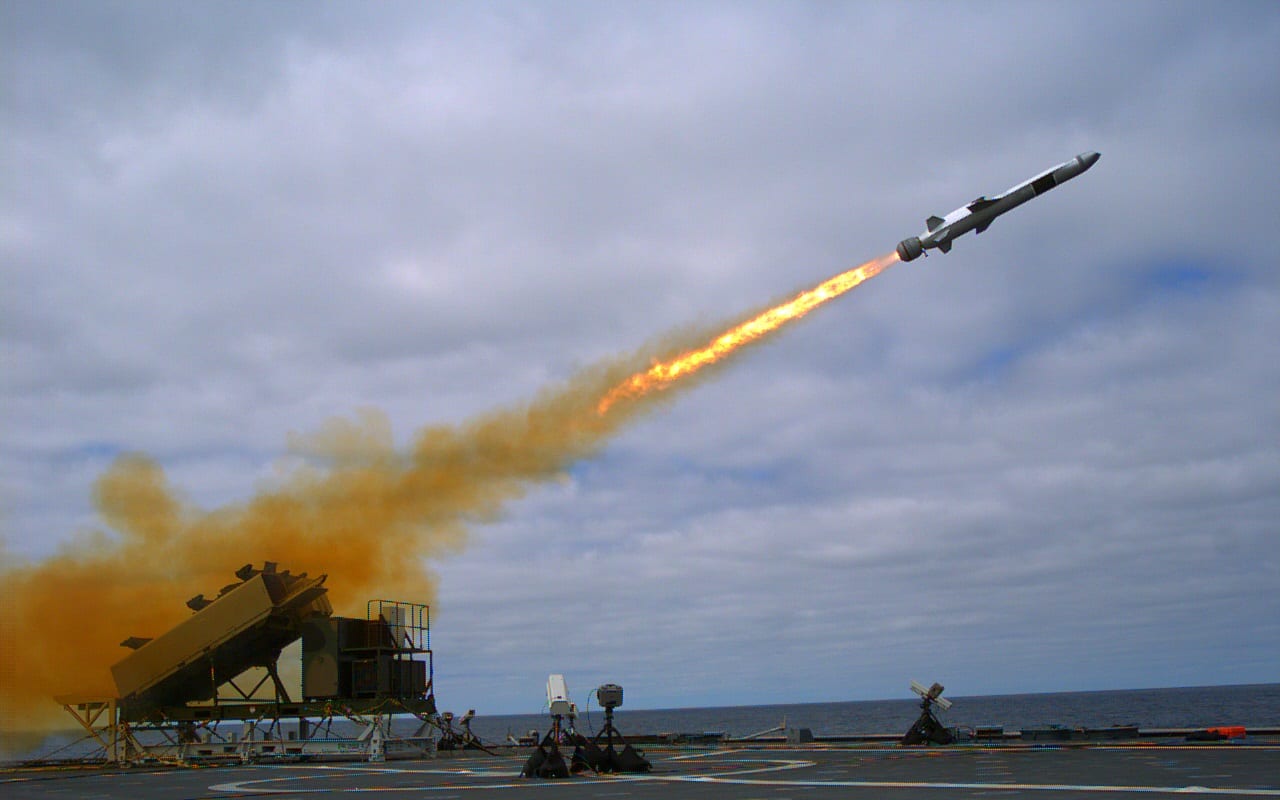
ARLINGTON, Va. — The U.S. Marine Corps general in charge of the U.S. Navy’s expeditionary warfare directorate said the Navy is looking at options to increase the lethality of its amphibious warfare ships with a containerized weapon system. A demonstration of this capability may occur after a year of development.
Speaking to reporters on Jan. 8, MGen Tracy W. King, director of expeditionary warfare in the Office of the Chief of Naval Operations, did not specify which types of missile could or would arm an amphibious warfare [L-class] ship, but a leading candidate is the RGM-184 Naval Strike Missile (NSM) — built by a Raytheon-Kongsberg partnership, being installed on littoral combat ships and the Constellation-class guided-missile frigate.
“We have these magnificent 600-foot-long, highly survivable, highly LPD 17s,” King said. “The LPDs need the ability to reach out and defend themselves and sink another ship. It’s not from the aspect of using them as a strike platform; it will drastically increase their survivability if the enemy has to honor that threat. My intent is to ensure that my desire to increase lethality of LPDs doesn’t interfere with [Director of Surface Warfare Rear Adm. Paul] Schlise’s efforts to increase lethality on LCSs.
“We’re working with Raytheon and other partners to see if they can increase production to get it [the Naval Strike Missile] out there. I suspect what you will see in the next year that we will probably test-fire a system off of an L-class ship and let the fleet play around with it, build up the doctrine on how we will use it and to confirm or deny whether it is worth the expense, which we think it is. We need the operators to confirm that.”

A Naval Strike Missile is launched from the littoral combat ship USS Coronado (LCS 4) during missile testing operations off the coast of Southern California in this 2014 photo. the NSM is a candidate to increase the lethality of U.S. Navy amphibious warfare ships. U.S. Navy / Mass Communication Specialist 2nd Class Zachary D. Bell
King said that Vice Adm. James W. Kilby, deputy chief of naval operations for warfighting requirements and capabilities, has him conducting a formal analysis and running some excursions on what the war games would tell us about lethality, and survivability and would the enemy actually honor it. He would than show empirical data to the fleet commanders.
“It’s a legitimate concern [about] putting these very rare systems on an L-class ship instead of another kind of warship,” King said. “We’re going to do it cautiously. My prediction is that we will have one within the next 12 months. We will let the fleet play around with it probably a year or so and then decide how we’re going to field it.”
King said a likely solution is a containerized weapon system that the Marine Corps will be using.
“When we jump on aboard a ship, that [weapon system] becomes available to the ship’s captain,” he said. “So maybe we don’t need to install launchers and NSMs. Maybe the Marine Corps EABO [Expeditionary Advance Base Operations] forces serve as the main battery when we are moving out. To me that just makes sense. We give the latitude and flexibility to the ship’s captain to use those assets when he needs to.”
King acknowledged the concern of some in the Marine Corps that the missiles could be expended in combat at sea before the Marines reach their destination.
“I am a little bit dismissive of that complaint because the ship’s got to get there first,” he said. “So, I think you’re going to see us deploying containerized weapon systems that we can use wherever we want to use them.”

Navy Envisions Containerized Weapon System to Arm Amphibious Ships - Seapower
ARLINGTON, Va. — The U.S. Marine Corps general in charge of the U.S. Navy’s expeditionary warfare directorate said the Navy is looking at options to increase the lethality of its amphibious warfare ships with a containerized weapon system. A demonstration...


